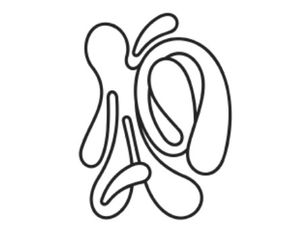
Saving the Planet: We Have the Solutions Now We Just Need to Change Our Behaviour

How many of you have kept up your 2020 New Year’s resolutions? Anyone? Can you remember what they were? I can’t, and chances are neither can you. Changing our behaviour is hard and making that new behaviour a habit is even harder. However, if we are going to stop climate change (not to mention the other issues our societies face), we have to find ways to make new, sustainable habits stick. As communicators we have a major role to play in making this happen.
The world is waking up to the seriousness of climate change and despite or maybe even because of the difficulties in 2020, individuals, businesses and governments see a need to take action. While there is a lot of bad news around at the moment, there is also some excellent news: we know what we have to do to tackle climate change and we have the solutions we need - we just have to do it!
Changing our behaviour requires us to understand the problem, know how we can do things better and care about it enough to take action. And great communications is how we best drive this change. It informs and engages; it demands attention and it can mobilise us to take action.
There are lots of behaviour change models available and what they all agree on is that you must clearly communicate the WHY, the HOW and the WHY ME? Let’s dive into this a little further:
1) The ‘WHY’: Why do we need to change? What’s wrong with what we are currently doing? This needs to be tailored to what a person cares about. For example, they may not care about climate change causing extreme weather in other parts of the world but they are likely to care about local changes maybe local flooding. As humans we also don’t like being told we are doing things wrong, so communications needs to be inspiring and framed as an exciting new challenge or opportunity. It should never be accusatory.
2) The ‘HOW’: What should we do instead? How do we do this? This has got to be broken down, explained and made to seem easy, even if in its entirety it isn’t.
3) The ‘WHY ME’: Why is this my responsibility? What’s in it for me? We are selfish beings and there has to be an incentive for us to make a change. So it could be that adopting more sustainable behaviour saves you money in the long run. Or maybe that the change is becoming desirable and you will be judged by your peers and people you care about if you don’t adopt. In our industry we are used to making products desirable, we just need to tweak this to apply to behaviours as well. Creatively communicating the change and storytelling attracts attention and inspires (or even pressurises) others to get on board.
Let me use an example to show you how this works in practice.
1) The WHY: This year, we’ve seen extreme fires in Australia. They have devastated lives, homes, business and natural habitats. Climate change is the key reason that bushfire seasons are getting longer and more serious. This is because the world is heating up due to the burning of fossil fuels and the release of carbon into the atmosphere. But if you don’t live in one of the areas affected it can feel too remote to your experience. So how do you make people care? One of the terrible consequences of the fires is that an estimated 30,000 koalas were killed this year. And everyone loves a koala. So communicating this statistic in an emotive way is one way to help consumers understand and want to take action.
2) The HOW: There are loads of ways to reduce carbon: switch to renewable energy, reduce your intake of meat, fly less, take public transport. Targeted communications around these options clearly stating the benefits of adopting them for an individual (as well as the koalas) can make the solution to the problem feel doable.
3) The WHY ME?: Again, communications must amplify not only the solutions to the carbon issue but also make clear the benefits to individuals of adopting such changes. Help people feel good about the changes they’ve made by showing them the impact they’ve had. Take them back to the koalas and show them the difference reduced carbon makes to natural habitats and local populations. The feel-good factor will inspire them to bring others on board and share your stories. And in this way, over time, scale is built and lasting change happens.
Convinced? Ok it may take a little more than the 200 words I have here but you get the picture. Of course, the communications and creative industries can’t solve these problems on our own. But we have a vital role to play in changing behaviours in the time frame the planet needs. Join us, it is time for the industry to mobilise. The planet (and the koalas) are depending on it.
- Sarah Cragg, MullenLowe Sustainability practice lead













